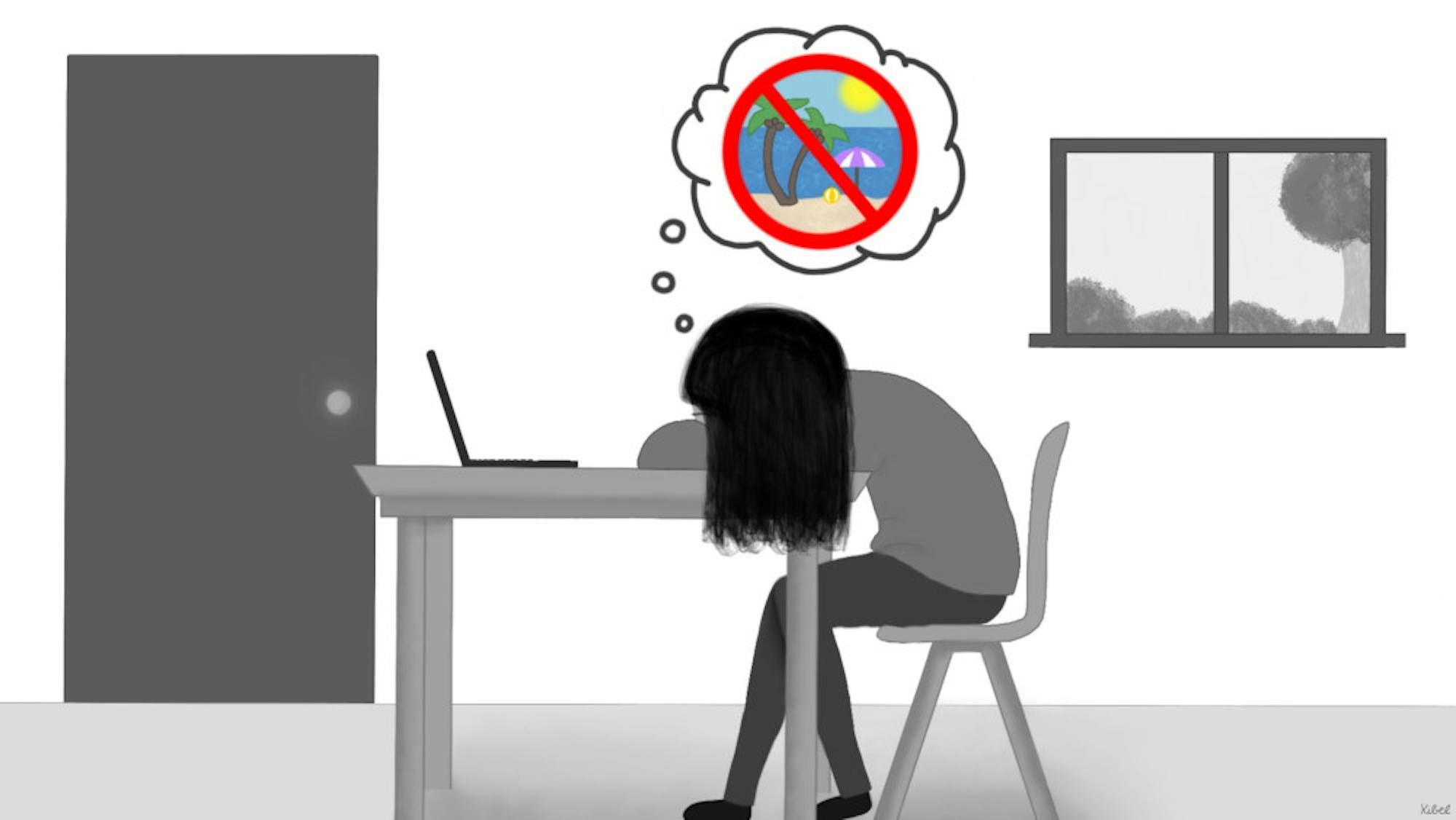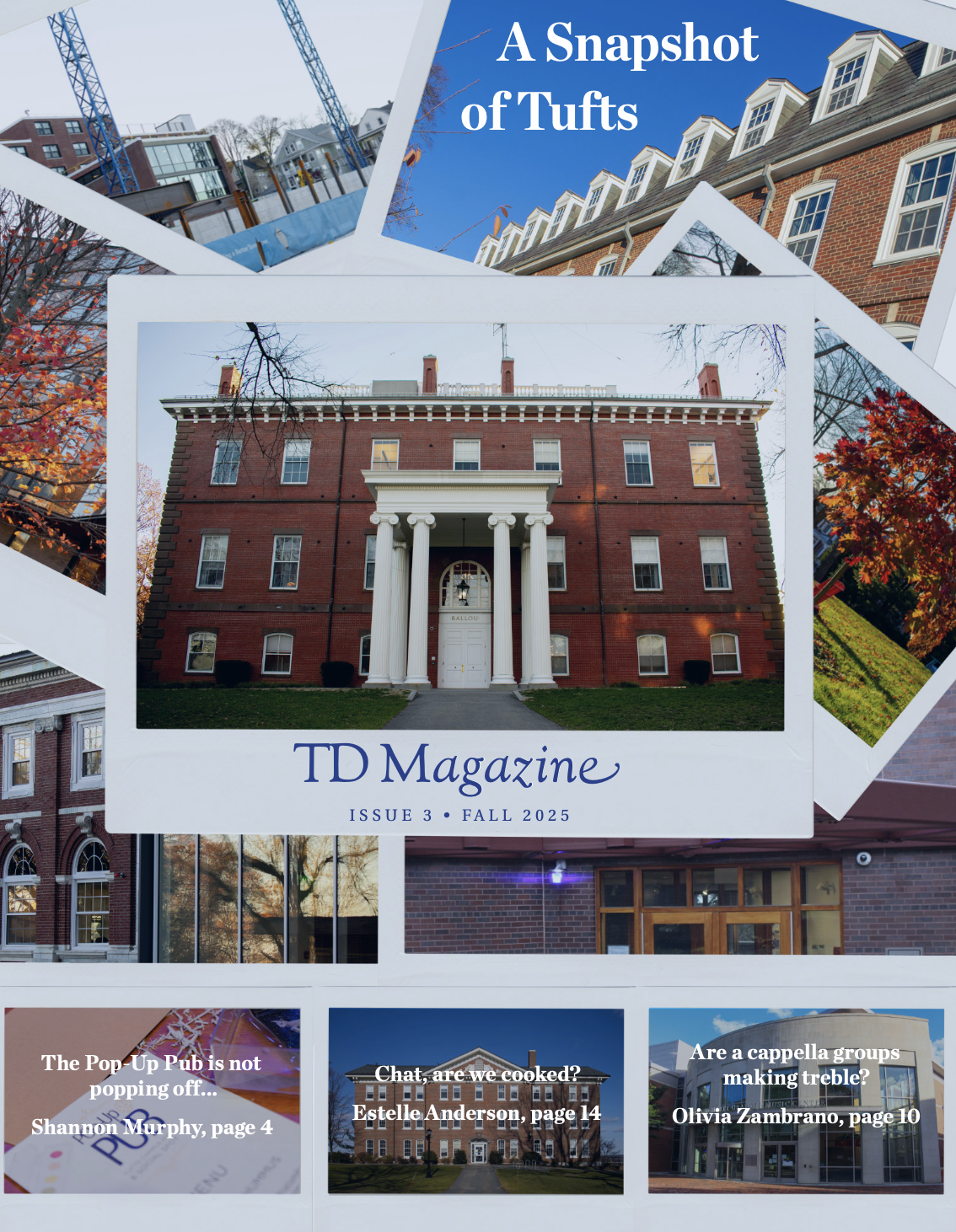The university started the spring semester late to accommodate arrival quarantine and shortened spring break to a single day to avoid extending the semester and discourage travel over the break. Without a break in sight, students are struggling with burnout amid growing workloads.
“I have a smile on my face and I participate in classes,” sophomore Athena Nair said. “It's not visible to see, but I think that's how a lot of people are doing. I'm super, super burned-out.”
Based on her own experience and conversations with peers, Nair crafted an open letter to faculty asking them to lighten the course load, implement breaks in class as brief respites and provide time for students to connect with one another.
“We ask that, for the professors who have not already, you follow through and change your syllabi in response to the intensity of our current situation–we cannot be following the same syllabi from previous years in a year like this one,” the letter states.
The letter acknowledges that professors should not operate according to a “business-as-usual” mindset and expect students to complete the same amount of work as in previous semesters.
“It has been difficult – and often impossible – to be held to the same standards of academic excellence and expected to perform well on exams and achieve a high GPA, while also experiencing the intense distress of the moment we are living in,” the letter states.
Nair emphasized that each student is facing their own set of challenges on top of school work.
“Whether it's a family thing, a friend thing, a national thing or a Tufts thing, something is constantly being added,” Nair said. “It's exhausting.”
Some professors updated their syllabi prior to the start of the spring semester to be more accommodating to students. Other professors have made changes more recently based on student feedback. Even so, many students find it difficult to bring up concerns to professors.
“Some professors are very good at reading the room and getting a sense of how students are feeling,” Nair said. “But in some cases, it's really hard to do that without anyone saying anything.”
Virginia Drachman, the Arthur Stern Jr. professor of American history, is one professor who has made changes to how she teaches her courses. This semester she decided to do less lecturing in her “Women in America since the 1950's” course and instead have students grapple with readings and primary sources. She has also tried to create a sense of community virtually in breakout rooms by giving students extra time to chat with each other.
“I've really been trying to do some revisions to accommodate the needs of my students or what I perceive to be the needs of my students,” Drachman said.
In addition, Drachman gave her students a day off from class on Wednesday and plans to have another "wellness" day towards the end of the semester.
“I like to use the phrase ‘use it as you choose it,’ because ‘wellness’ [day] kind of suggests a break, like spring break, but sometimes you need that day for other things … It’s your day and you do with it what you want,” Drachman said.
Drachman has tried to connect with her students, but it can be difficult over Zoom.
“When I see 20 little rectangles on my screen, it's hard to really know how my students are doing, but I ask them, you know, pretty regularly,” she said. And sometimes they say they're fine. And sometimes it's a little quieter.”
Drachman said students in her class were very happy to have a break. She could tell, even through the little rectangles on Zoom.
“I'm getting the sense from my students that they just need a break,” she said. “The semester has a start and an end and nothing in between.”
While many recognize and appreciate the safety reasons for the one-day spring break, students are struggling to keep up with their workloads without a more substantial break.
“I just don’t feel like you can put people through a rigorous university program for 14 straight weeks without any time off,” Norman Ramsey, associate professor of computer science, said.
Ramsey canceled homework and recitation several weeks ago in his COMP 105 class. Ramsey said he was able to do this because he knows the information students actually need to know in order to succeed in future computer science classes, and they won’t be missing out on crucial knowledge with one assignment taken away.
“Every year we might have one or two students who are going to go on and do doctoral study and they're going to be at a slight disadvantage because that's something that [information] would have been useful to them,” Ramsey said. “But everyone's going to be fine. We'll get a little less education than we would have [normally] this spring, but it's a pandemic and we’re going to wind up getting less education one way or the other.”
In addition to professors adapting syllabi and workloads, Counseling and Mental Health Services has continued to support students when they reach out.
“We know students are struggling from all the students we meet with, from faculty, staff, et cetera,” Marilyn Downs, a staff clinician and director of outreach and group program at CMHS, said. “It doesn’t always translate into people making a counseling appointment.”
Staff clinicians at CMHS serve as liaisons to various groups and services on campus. Downs serves as the liaison to Arts and Sciences and Engineering faculty and has provided training for faculty and staff on how to support students who may be struggling with mental health issues.
CMHS has a number of resources on its website for mindfulness apps and resources, as well as group workshops. CMHS has also implemented a new “Ask a Counselor” service this year: 15-minute phone appointments that students can schedule online.
“Sometimes it's about something very short and specific, but I think sometimes it's a little bit of a toe in the water, actually, to make an appointment and start with a 15-minute phone call and [think] ‘That wasn't too bad, so maybe now I can come in for a full appointment,’” Downs said.
Despite efforts made by faculty and staff to extend support to students, the difference between a one-day-long and week-long spring break is significant. A longer break gives students the time to relax and reset, rather than just catch up on work.
“A week-long [break] with the two weekends is like nine days off. It's such a difference from a three-day weekend,” Nair said. “That is a … turn your brain off from school kind of thing or at least momentarily. It's just completely different.”
Nair said she retained the most information last semester in classes that had more flexibility in grading and in the structure of the class.
"If your goal is to teach us for the long term, it's better to not cram in information just to get it done,” she said. “And better to have more flexibility so that we can be more engaged long term.”
Professors are doing what they can to support students and meet them where they’re at, while acknowledging the pandemic and a number of other factors weighing on students’ minds.
“You give people time off, they can do more. And if you don’t give them time off, they can do less,” Ramsey said. “So we lost our time off, we’re doing less.”






